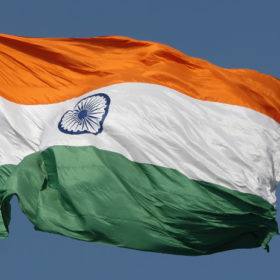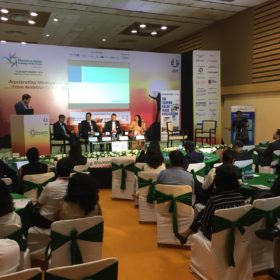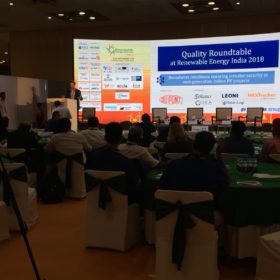India added world’s second largest PV capacity in first half of 2018
The nation installed 4.9 GW of solar, surpassing the USA – which installed 4.7 GW – to become the second largest solar market in the first half of the year, second only to China’s 24.3 GW.
India’s ‘world’s biggest’ solar auction delayed by a month
The bid submission deadline for the national 10 GW PV project plus manufacturing tender is now November 12. According to officials, there are amendments to be made to the tender requirements.
New tenders totaling 1.2 GW announced in India
In Uttar Pradesh, another 500 MW of solar capacity is expected to be tendered by the end of October, while Gujarat has announced a 700 MW tender under Phase III of the Raghanesda Solar Park.
India: 40% electricity generation from non-fossils by 2030, up to $80 billion for PV manufacturing
India’s Prime Minister kick started the first Assembly of the ISA, the second IORA Renewable Energy Ministerial Meeting, and the 2nd Global RE-Invest yesterday in Greater Noida. The agenda of the day? Universal access to solar energy at affordable rates; securing 40% of India’s electricity generation from non-fossil fuels by 2030, and allocating up to US$80 billion to boost domestic PV manufacturing.
Taiwan takes India to WTO over safeguard tariffs
Taiwan has joined Malaysia in requesting consultations with India under the safeguard agreement of the World Trade Organization (WTO), following India’s decision to impose 25% safeguard duties on imports of solar cells, whether or not assembled in modules.
Better bifacial adoption, catalyzing innovation focus of Future PV Roundtable at REI
pv magazine’s Future PV Roundtable, held at the 2018 Renewable Energy India (REI) Expo in Greater Noida, discussed how India can better adopt bifacial solar cell and module technology – the future of power generation. Prominent industry speakers also put forth their views on how standards can catalyze solar innovation for India-specific challenges, and on PV materials and components for enhanced module efficiency and recycling.
pv magazine Quality Roundtable, REI: Innovation, investment and improving PV installs
pv magazine’s Quality Roundtable at the 2018 Renewable Energy India (REI) Expo, took place in front of a packed audience. It discussed current problem areas in the India solar industry; how solar developers and solution providers can improve the quality of PV installations; and innovative financial instruments to reduce the cost of debt and scale up infrastructure investment.
Indian PV installations fell by half in Q2
In the second quarter, India installed solar projects amounting to 52% less capacity quarter-over-quarter, due to uncertainties around trade cases, module price fluctuations and PPA renegotiations prompted by record low solar tender bids.
Nearly 8 GW of Indian solar projects receive 6 month extension – MNRE
To ensure their continued viability, nearly 8 GW of solar PV projects have been granted an extension by the Ministry of New and renewable Energy (MNRE).
India: Power regulator told to pass on changes in duties to consumers
Offsetting the impact of changes in central or state government duties post bidding, India’s Power Ministry has directed the Central Electricity Regulatory Commission (CERC) to pass on the excess costs to consumers in the form of electricity tariffs in a time-bound manner.






